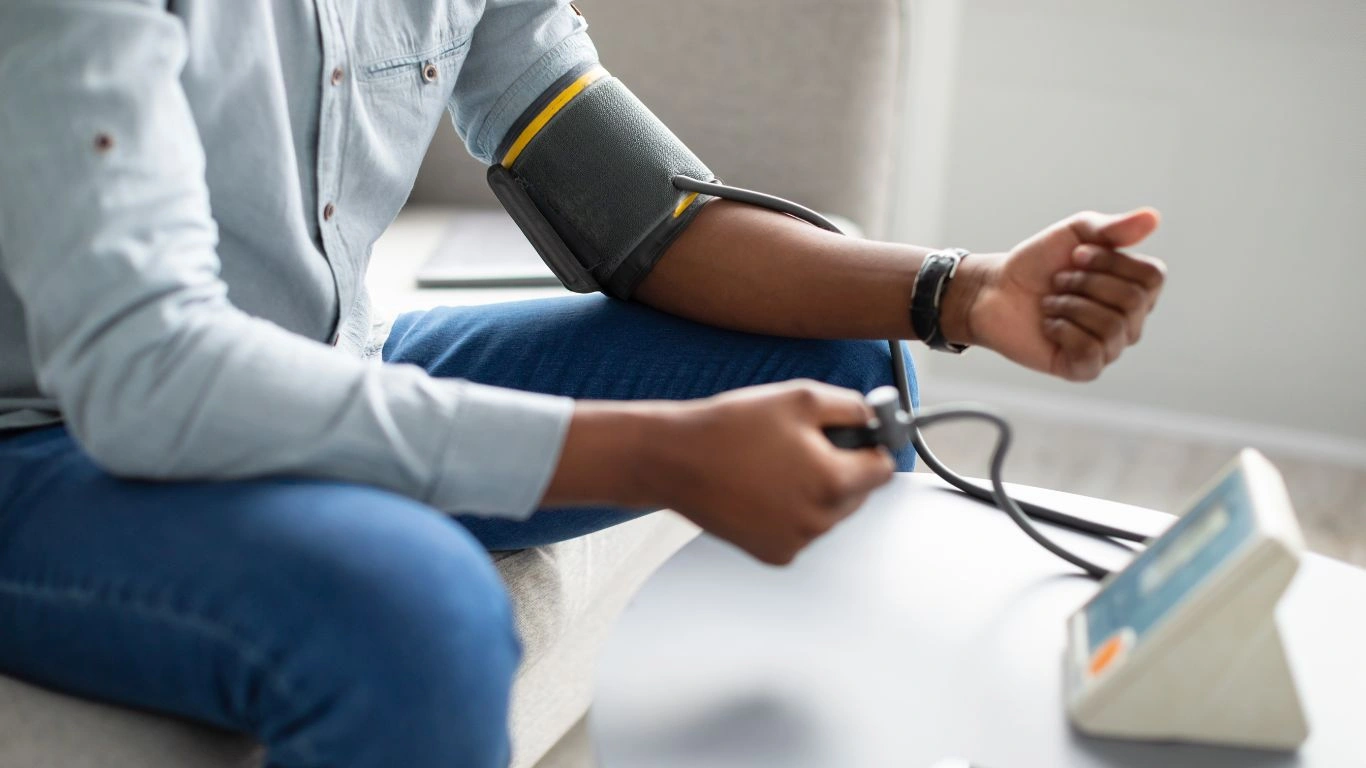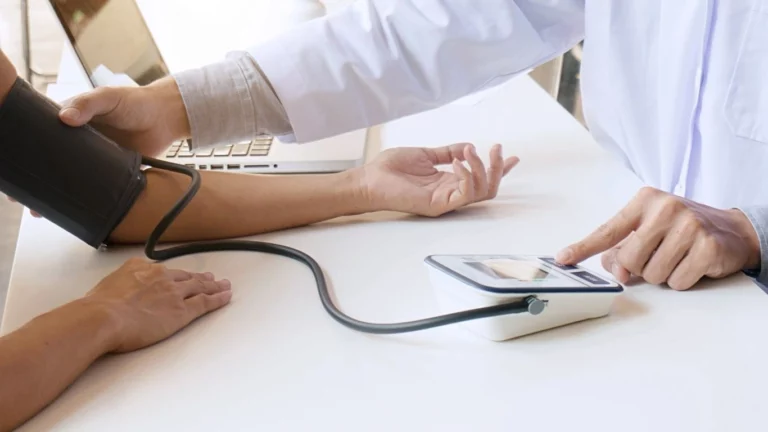Discover the Best Rice Varieties for High BP to Manage Hypertension
Hey there! If you’re managing high blood pressure—or just curious about how your diet can impact it—then you’ve probably heard a lot about what to eat and what to avoid. One food that often flies under the radar is rice. But here’s the thing: not all rice is created equal, especially when it comes to high BP. Over my years as an Internal Medicine Physician specializing in hypertension management, I’ve seen firsthand how the type of rice you choose can either support your health goals or unintentionally spike your numbers. So, today, let’s dive into the best rice varieties for high BP—what they are, why they matter, and how you can make smarter choices without sacrificing flavor or comfort.
Why Rice Matters in High Blood Pressure Management

Rice is a staple in so many diets worldwide, and for good reason—it’s versatile, comforting, and easy to prepare. But for those with hypertension, the kind of rice you eat can have subtle effects on your blood pressure. It’s not just about salt and seasoning; the grain’s fiber content, glycemic index, and nutrient profile all play a part. In clinical practice, I often recommend switching to certain rice types because they offer better blood pressure benefits through improved blood sugar control, weight management, and nutrient density.
Understanding the Impact of Rice on Blood Pressure
One of the biggest culprits behind blood pressure spikes is blood sugar imbalance. Rice with a high glycemic index (GI) can cause rapid sugar surges, which trigger hormonal changes that may elevate blood pressure. So, choosing rice with a lower GI helps keep these fluctuations in check. Plus, rice varieties richer in fiber and essential nutrients promote better heart health overall—something I emphasize during patient consultations.
- Low glycemic index helps prevent sugar spikes.
- Fiber content supports healthy digestion and weight control.
- Rich in vitamins and minerals that help regulate blood pressure.
In fact, when I worked with patients switching from white, polished rice to brown or whole grain varieties, I noticed consistent improvements not just in their blood pressure readings but in their overall energy and wellbeing. It’s these small dietary tweaks that add up to meaningful health gains.
Top Rice Varieties for High BP: What to Look For

So, which rice varieties truly stand out as the best rice varieties for high BP? Let’s break it down. I’ll highlight some of my personal favorites that I regularly suggest to patients managing hypertension.
1. Brown Rice – The Classic Go-To
Brown rice is probably the most well-known “healthy” rice variety—and for good reason. It’s a whole grain, meaning it retains the bran and germ layers that pack in fiber, magnesium, and potassium—all essential for blood pressure regulation. Its moderate glycemic index also means it won’t cause those nasty blood sugar spikes.
From personal experience, switching patients to brown rice not only helped stabilize their BP but also made meal planning simpler. It’s easy to cook, pairs well with countless dishes, and feels hearty without being heavy.
2. Black Rice – The Nutrient Powerhouse
Black rice, sometimes called “forbidden rice,” is rich in antioxidants, especially anthocyanins, which are known for their anti-inflammatory effects. Inflammation is a sneaky contributor to hypertension, so foods that combat it naturally support better cardiovascular health.
I’ve noticed that patients who incorporate black rice enjoy a variety of textures and flavors while benefiting from its nutrient punch. Plus, it’s a great way to add color and excitement to the plate—something I always encourage to keep diets sustainable.
3. Red Rice – The Heart-Friendly Option
Red rice also offers excellent benefits for those with high blood pressure. Loaded with iron, fiber, and polyphenols, it helps reduce oxidative stress and supports vascular health. Its slightly nutty taste makes it a favorite for folks looking to diversify their meals without losing the nutrition edge.
I often share recipes featuring red rice because it pairs beautifully with greens, legumes, and lean proteins, creating balanced meals that promote heart health and help keep BP in check.
More Rice Varieties That Support Healthy Blood Pressure

If you thought that was the full list, I’m glad you stuck around because there are a few more rice varieties that deserve some spotlight. When advising patients, I always stress variety—not just for nutrients but also to keep meals exciting and enjoyable. Let’s look at some other best rice varieties for high BP that you might want to add to your grocery list.
4. Basmati Rice – A Low-GI Favorite
Basmati rice is a long-grain variety often praised for its aromatic fragrance and fluffy texture. What makes it especially interesting for people with hypertension is its relatively low glycemic index compared to other white rice types. That means it causes slower, steadier increases in blood sugar rather than sudden spikes.
From my clinical experience, patients who prefer white rice but want to keep their blood pressure stable often switch to basmati. It’s an easy swap with minimal adjustments to taste or cooking methods. Plus, basmati tends to be less processed, which preserves more of its natural nutrients.
5. Wild Rice – The Nutrient-Rich Grain Alternative
Although technically a grass seed, wild rice is often lumped in with traditional rice varieties. It’s packed with protein, fiber, and antioxidants—all vital for maintaining healthy blood pressure and overall heart health. Wild rice also contains magnesium and zinc, minerals that contribute to blood vessel health and proper muscle function.
I’ve recommended wild rice to patients who are adventurous eaters or those who want to diversify their whole grain intake. It takes a bit longer to cook, but the health benefits and its unique nutty flavor make it worth the extra effort.
How to Incorporate the Best Rice Varieties for High BP into Your Diet

Knowing which rice varieties are best for high blood pressure is one thing—but putting that knowledge into practice can be a whole different story. I get it—diet changes can feel overwhelming, especially if rice has been a staple comfort food for years. That’s why I always suggest taking small steps that fit into your lifestyle.
Tips from the Clinic for Smarter Rice Choices
- Start by swapping white rice for brown or basmati rice. You don’t need to overhaul your entire pantry overnight. Even this simple change can help balance blood sugar and improve nutrient intake.
- Experiment with mixing different types of rice. Combining brown rice with black or red rice in the same meal adds texture, flavor, and a nutritional boost.
- Pay attention to portion sizes. While the type of rice matters, overeating any grain can impact weight and blood pressure. I usually advise patients to keep portions around half a cup cooked per serving.
- Pair rice with plenty of vegetables and lean proteins. This balances your meal and provides fiber, vitamins, and minerals that support cardiovascular health.
- Be mindful of how you prepare your rice. Avoid adding too much salt or high-sodium sauces—season with herbs, spices, lemon, or a splash of low-sodium soy sauce instead.
In clinic, patients often tell me how these small but mindful tweaks make eating well feel doable instead of a chore. And honestly, feeling satisfied with your meals is key to sticking with a healthy routine long-term.
Rice and Lifestyle: What Else Supports Blood Pressure Control?

Rice choice is just one piece of the puzzle when it comes to managing high blood pressure. From my years working directly with patients, I’ve seen how combining dietary changes with other healthy habits makes the biggest difference. Here’s a quick rundown of what I encourage alongside smarter rice choices:
- Regular physical activity: Even moderate exercise, like walking 30 minutes a day, can lower BP significantly.
- Stress management: Chronic stress can raise blood pressure, so incorporating relaxation techniques like meditation or yoga helps.
- Limit alcohol and quit smoking: Both habits can undermine blood pressure control and overall heart health.
- Maintain a healthy weight: Excess body weight is strongly linked to hypertension, so combining portion control and activity supports better outcomes.
- Consistent monitoring: Keep track of your blood pressure regularly—this helps catch trends early and adjust your lifestyle as needed.
When patients embrace this holistic approach, the positive impact is evident—not just on their blood pressure readings but on energy, mood, and long-term health. That’s the ultimate goal, right? To live well and enjoy the foods we love, including rice, without worry.
Cooking Tips and Recipes for the Best Rice Varieties for High BP

After years of counseling patients on lifestyle and diet, one thing is crystal clear: knowing the best rice varieties for high BP is only half the battle. The way you prepare and enjoy rice matters just as much. I often hear from patients that healthy eating feels bland or complicated, but that couldn’t be further from the truth. With a few simple tweaks, rice can be a flavorful and heart-friendly star on your plate.
Keep It Simple and Flavorful
For starters, cooking rice with low-sodium broth instead of plain water adds a layer of natural flavor without loading up on salt. Toss in some fresh herbs like cilantro, parsley, or basil once the rice is cooked—these not only taste great but also pack antioxidants and vitamins that support vascular health.
Here’s a little personal trick I share: a squeeze of lemon juice or a sprinkle of toasted nuts like almonds or walnuts right before serving. It adds a refreshing tang and crunch, plus healthy fats that help keep inflammation down—something crucial for hypertension management.
Recipe Idea: Colorful Grain Bowl
- Start with a base of cooked brown or red rice.
- Add steamed broccoli, roasted sweet potatoes, and sautéed spinach.
- Top with grilled salmon or chickpeas for protein.
- Drizzle with a simple dressing made of olive oil, lemon, garlic, and a pinch of black pepper.
- Garnish with fresh herbs and a few toasted pumpkin seeds for extra texture.
This bowl is a nutrient powerhouse and easy to throw together even on busy days. When patients bring this kind of meal into their routine, I often see blood pressure improvements alongside better energy and satisfaction from meals.
Common Misconceptions About Rice and Blood Pressure

It’s important to bust a few myths around rice and hypertension before we wrap up. I always encourage my patients to approach diet with accurate info because misinformation can be a real roadblock.
Myth 1: All Rice Raises Blood Pressure
Not true! While white rice is often criticized for its high glycemic index, it doesn’t directly raise blood pressure in everyone. The impact depends on portion size, what else you’re eating, and overall lifestyle. That said, choosing whole grains or lower-GI rice varieties can make managing hypertension easier.
Myth 2: You Have to Cut Out Rice Entirely
I get it—when diagnosed with high BP, many people think they need to say goodbye to favorite foods. But in my practice, I emphasize balance over restriction. The best rice varieties for high BP, paired with healthy habits, allow you to enjoy meals without stress or guilt.
Myth 3: Cooking Methods Don’t Matter
Actually, how you prepare rice can change its nutritional profile. For example, rinsing rice before cooking removes some starch, which might lower its glycemic index slightly. Also, avoid adding excessive salt or fatty sauces that counteract the benefits of healthier rice choices.
Final Thoughts on Rice and Blood Pressure
Managing high blood pressure is a marathon, not a sprint. Incorporating the right rice varieties into your diet is a simple yet effective way to support your health journey. From brown and black rice to wild and basmati, these grains offer nutrients that help regulate blood pressure and boost overall well-being.
If you’re feeling overwhelmed by dietary changes, remember: small, consistent steps work wonders. And as a physician who has helped countless people navigate hypertension, I can say with confidence that enjoying delicious rice meals that benefit your heart is totally achievable.
References
- American Heart Association
- National Heart, Lung, and Blood Institute
- Centers for Disease Control and Prevention
Disclaimer
This article is intended for informational purposes only and does not replace professional medical advice. Always consult your healthcare provider before making significant changes to your diet or managing a medical condition such as hypertension.

Dr. Gwenna Aazee is a board-certified Internal Medicine Physician with a special focus on hypertension management, chronic disease prevention, and patient education. With years of experience in both clinical practice and medical writing, she’s passionate about turning evidence-based medicine into accessible, actionable advice. Through her work at Healthusias.com, Dr. Aazee empowers readers to take charge of their health with confidence and clarity. Off the clock, she enjoys deep dives into nutrition research, long walks with her rescue pup, and simplifying medical jargon one article at a time.






